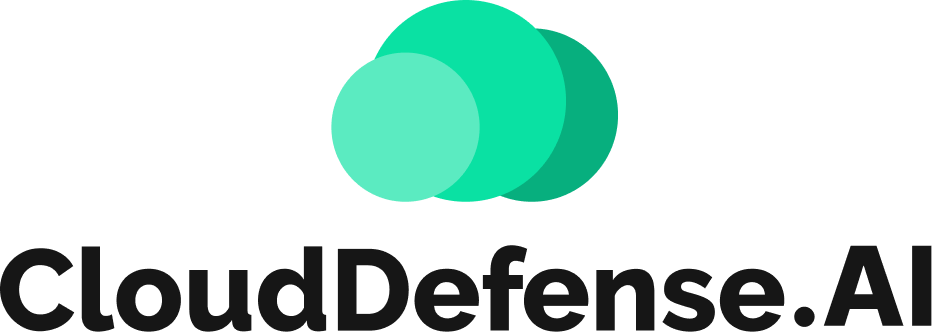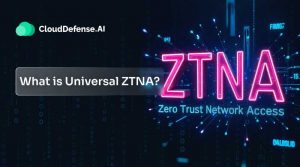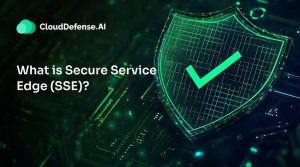What is Secure Service Edge (SSE)?
In technical terms, SSE is a security framework that combines a bunch of different security functions into one cloud-based service. We’re talking about stuff like Secure Web Gateways (SWG), Cloud Access Security Brokers (CASB), Zero Trust Network Access (ZTNA), and Firewall-as-a-Service (FWaaS). It’s all about protecting data and providing secure access to it, no matter where users are connecting from.
Now, SSE didn’t just pop up out of nowhere. It’s kind of like the next step in how we’ve been handling network security. Here’s a quick rundown of how we got here:
Traditional security: Everything was on-premises. We had hardware firewalls, clunky VPNs, and tons of appliances. It worked okay when everyone was in the office, but it was a pain to manage and didn’t scale well.
Cloud migration: Businesses started moving their apps and data to the cloud. This was great for flexibility but created new security headaches. We saw the rise of cloud-specific security tools like CASBs.
SASE (Secure Access Service Edge): Gartner introduced this term in 2019 to describe a new model that combined networking (SD-WAN) and security into one cloud service. It was a big shift in thinking about how to secure modern, distributed networks.
SSE: Gartner realized that some companies wanted the security benefits of SASE without necessarily changing their networking setup. So they introduced SSE in 2021 as a way to focus specifically on the security part of SASE.
SSE is basically taking all those cloud security tools that were developed separately and putting them together in one package. It’s making security more streamlined and easier to manage, especially for companies with remote workers or multiple office locations.
The key thing about SSE is that it’s designed to secure data, rather than just securing network perimeters like we used to do. It’s a shift in thinking that matches how businesses operate today, with data and users spread out all over the place.
SSE Security Services

Cloud Access Security Broker (CASB)
This one’s been around for a while. It started when companies realized their employees were using cloud apps without IT knowing. CASBs help control and monitor how people use cloud services.
Secure Web Gateway (SWG)
SWGs have been with us since the early days of web filtering. They’ve come a long way from just blocking bad websites. Now they’re all about stopping malware and controlling what data leaves your network.
Zero Trust Network Access (ZTNA)
This is the new kid on the block. ZTNA came about because VPNs just weren’t cutting it anymore. It’s all about “never trust, always verify” – making sure only the right people get access to the right stuff.
Firewall-as-a-Service (FWaaS)
Remember those traditional firewalls? FWaaS takes all that functionality and puts it in the cloud. It’s way easier to manage and works better for remote workers.
These services used to be separate things you had to piece together. SSE brings them all under one roof, making life easier for IT teams and keeping everything working smoothly together. Also,please note that the specific set of services offered by an SSE solution might vary depending on the vendor. However, these core functionalities form the foundation of a robust SSE platform.
Difference between SASE and SSE
SASE and SSE are often mentioned together, but they’re not exactly the same thing. Let’s clear up the confusion.
SASE, which stands for Secure Access Service Edge, is the big picture. It’s like the whole enchilada. SASE combines networking and security into one cloud-based service. It’s about connecting users to their apps and data securely, no matter where they are.
SSE, or Secure Service Edge, is more focused. It’s just the security part of SASE. Think of SSE as SASE’s security-obsessed cousin. SSE doesn’t deal with the networking stuff like SD-WAN that SASE includes. Some companies might want the whole SASE package, while others just need the security bits that SSE offers.
In short: SASE = networking + security, while SSE = just the security part.
Why is SSE Crucial?
- Adaptation to Remote Work Paradigms—With people working from everywhere, old-school security just doesn’t cut it anymore. SSE helps keep everyone safe, no matter where they’re logging in from.
- Cloud-Centric Security—More stuff is moving to the cloud, and SSE is built for that. It protects your data and apps in the cloud without slowing things down.
- Advanced Threat Protection—Bad guys are always coming up with new tricks. SSE brings together different security tools to catch more threats.
- Simplified Security Management—Instead of juggling a bunch of different security tools, SSE puts everything in one place. It’s easier to manage and often cheaper too.
- Scalability and Flexibility—SSE is flexible and scalable. As your business grows or changes, your security can keep up without a hassle.
- Better user experience—With SSE, security checks happen in the background. Users can do their work without getting bogged down by slow VPNs or other clunky security measures.
Why Choose SSE Over Traditional Network Security?
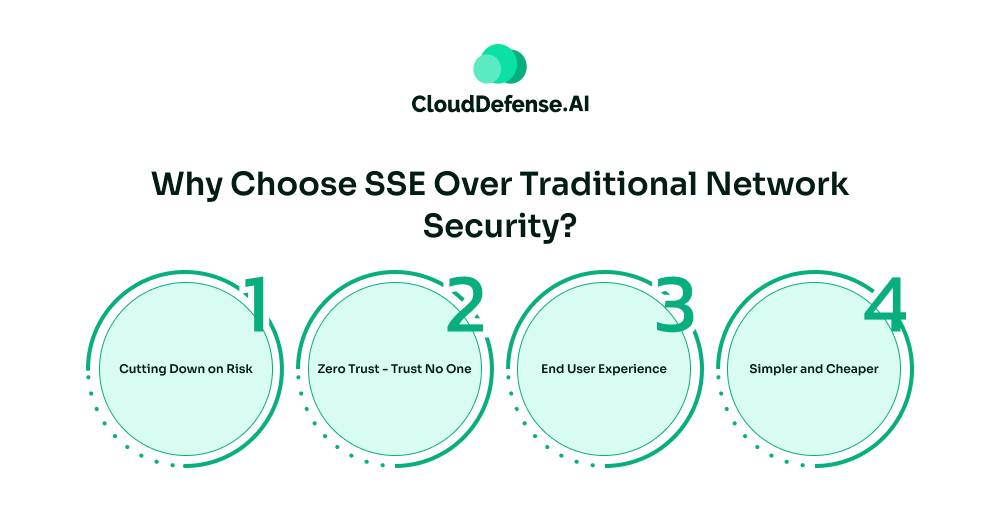
SSE is changing the game when it comes to network security. It’s all about moving away from old-school methods and embracing a cloud-based approach. Here are the main perks:
Cutting Down on Risk
SSE doesn’t tie security to a specific network. Instead, it follows users and their connections wherever they go. This means fewer blind spots and better protection overall. Plus, it gives IT teams a clearer picture of what’s happening with users and data across the board. And when there’s a security update? It happens automatically in the cloud, so you’re not waiting around for someone to manually update everything.
Zero Trust – Trust No One
With SSE, the motto is “trust no one.” It checks four things before letting anyone access anything: who you are, what device you’re using, what app you’re trying to use, and what you’re trying to do. This means users don’t automatically get access just because they’re on the company network. It’s safer this way – bad guys can’t move around easily if they do get in, and your apps stay hidden from the internet.
End User Experience
SSE is built to be fast and smooth. The best systems have data centers all over the place, so security checks happen close to where users are. This means things like decrypting and checking secure connections don’t slow everything down. For people working remotely, it’s a big upgrade from clunky VPNs. Everything just works faster and smoother.
Simpler and Cheaper
SSE bundles a bunch of security services into one package. We’re talking web filtering, cloud security, zero trust access, firewalls, sandboxes for testing suspicious files, data loss prevention, and more. You don’t have to buy all these separately or figure out how to make them work together. And if you don’t need everything right away, you can add stuff as you go. The best part? Everything’s protected the same way, no matter how your team is accessing it.
Top SSE Use Cases
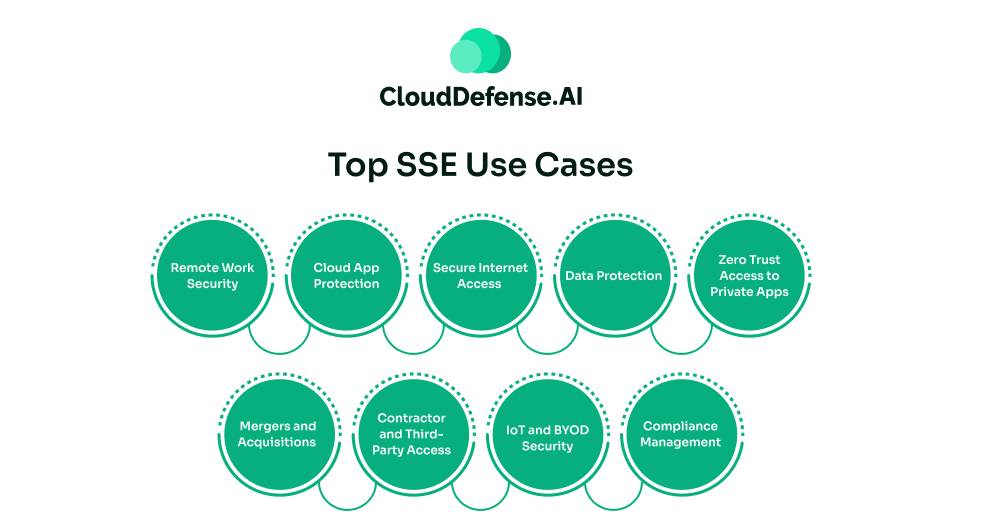
Remote Work Security
With more people working from home or coffee shops, SSE helps keep everyone safe no matter where they log in from. It’s like having a security guard that follows your employees around, making sure they’re not accidentally letting the bad guys in when they’re working on their laptop at Starbucks.
Cloud App Protection
These days, we’re all using cloud apps like Salesforce or Office 365. SSE keeps an eye on how these apps are being used, making sure sensitive data isn’t leaking out and blocking any fishy behavior.
Secure Internet Access
SSE acts like a bouncer for the internet, keeping employees away from sketchy websites and blocking malware before it can cause trouble. It’s especially handy when people are browsing on public Wi-Fi.
Data Protection
SSE helps stop sensitive info from walking out the door, whether it’s by accident or on purpose. It can spot when someone’s trying to upload a confidential document to their personal Dropbox and put a stop to it.
Zero Trust Access to Private Apps
Instead of giving everyone access to everything once they’re on the VPN, SSE takes a “trust no one” approach. It checks who you are and what you’re trying to do before letting you into any company apps or data.
Mergers and Acquisitions
When companies join forces, SSE can help quickly bring the new team under the same security umbrella without a ton of new hardware or software.
Contractor and Third-Party Access
SSE makes it easier to give outside folks limited access to what they need without compromising your whole network.
IoT and BYOD Security
With everyone bringing their own devices to work and IoT gadgets popping up everywhere, SSE helps keep all these new endpoints in check.
Compliance Management
For industries with strict rules about data handling, SSE can help tick a lot of compliance boxes by providing consistent security and detailed logs of who accessed what.
Choosing the Right SSE
With the growing popularity of SSE, navigating the options and choosing the right solution can feel overwhelming. Here are some crucial factors to consider when selecting an SSE for your specific security context:
Identify your organization’s biggest security concerns. Are you primarily worried about malware and phishing attacks (SWG)? Do you need robust cloud application control (CASB)? Understanding your vulnerabilities will guide your feature selection.
Consider your user base and their work style. Do you have a large remote workforce? An SSE solution offering easy, agentless deployment might be ideal. Evaluate options catering to your specific deployment needs.
Map out your cloud usage. Are you a multi-cloud, hybrid-cloud, or single-cloud environment? Ensure your chosen SSE integrates seamlessly with your existing cloud platforms for smooth operation.
Project your future growth. Choose an SSE solution that can scale efficiently to accommodate a growing user base and data volume. Prioritize solutions with a proven track record of high performance and minimal latency.
Evaluate the ease of integration with your existing security infrastructure. Look for an SSE that offers seamless integration with your firewalls, SIEM systems, and other security tools. Additionally, consider the management complexity. Choose a solution with a user-friendly interface for easy administration.
Vendor Support and SLAs. Look for a provider with a proven track record of excellent customer service and readily available technical support. Scrutinize the Service Level Agreements (SLAs) to ensure uptime guarantees and performance benchmarks meet your expectations.
Final Words
The world of cybersecurity is changing fast, and SSE is at the forefront of this shift. It’s not just some fancy new tech – it’s becoming a must-have for businesses that want to stay secure in today’s digital world. With remote work, cloud services, and cyber threats on the rise, the old ways of doing security just don’t cut it anymore.
SSE offers a more flexible, scalable, and effective approach to keeping your data and users safe. If you’re not considering SSE for your business, you’re falling behind. It’s time to take a hard look at your security strategy and ask yourself if it’s really up to the challenges of today’s digital world.
